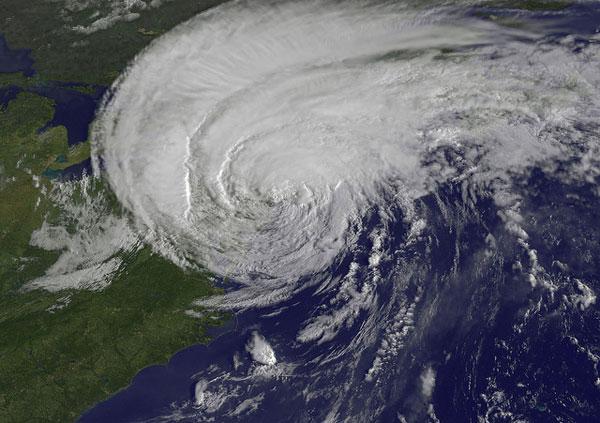
Disaster's Aftermath: Assessing Hurricane Irene's Damage

MINNEAPOLIS Less than two months after Hurricane Irene barreled up the eastern coastline of the United States, a group of scientists from some of the areas hardest hit presented evidence of the storm's dramatic geological effects on their home states.
Researchers from Pennsylvania, New Jersey, New York and Vermont took to the podium at a meeting of the Geological Society of America, to discuss what they've learned since the massive storm swept across the Northeast.
The numbers that are emerging, not surprisingly, paint a picture of a powerful storm that sent record rains surging into New England's waterways , causing landslides, massive flooding and billions of dollars in damage.
Rain, rain and more rain
Joshua Galster, of New Jersey's Montclair State University, said a barrage of rain in his state caused unprecedented water levels in rivers and streams.
"We've had record-setting rainfall for the month of August and September," Galster told a crowd of his colleagues. "Basically, we got a year's worth of precipitation in those two months."
Some streams in central and northern New Jersey saw peak levels that were 300 percent higher than the previous high-water record, Galster said.
Sign up for the Live Science daily newsletter now
Get the world’s most fascinating discoveries delivered straight to your inbox.
In addition, just days after Irene swept across the Garden State, New Jersey got walloped again when Tropical Storm Lee brought additional waters to the already saturated regions.
"Irene was a really big media event people were ready for it," Galster said. "Lee, not so much. People were caught completely unaware." [Related: Will Hurricane Irene's Name Be Retired? ]
Tropical Storm Lee's devastating sneak-attack on states just beginning to dig out from Hurricane Irene's devastation was a recurrent theme throughout the talk.
Further complicating matters, Hurricane Irene's raging waters swept away many scientific tools researchers depend upon to quantify a storm's fury.
Christopher Koteas, of the University of Massachusetts, Amherst, said the storm washed away stream gauges in his state. It also caused landslides and mudslides and raging floods in the area, which caused roads to crumble away. Quite a few have still not yet re-opened, he said.
The data did reveal a few surprises, the researchers said.
Storm surprises
Koteas explained that although Hurricane Irene and Tropical Storm Lee both brought powerful floods, they differed in one significant way.
"Flooding associated with Irene picked up an incredible amount of material, and Lee had almost no turbidity," Koteas said. He explained that because Irene's floods washed away such a huge amount of sediment and other material, there wasn't much left behind for Lee. "So our next big storm had a very different effect on the system."
Douglas A. Burns, a hydrologist with the U.S. Geological Survey, said the storm also brought surprises to New York . Hurricane Irene was so powerful that, at one point, it changed salt levels in the Hudson River near New York City to almost zero.
"The flood was so massive it pushed all the salt water out into the ocean," Burns said.
At least 50 stream gauges in New York recorded record floods, however, many of the state's turbidity probes, which measure how much dirt and other material is swirling around in the water, were lost.
"They just weren't build for a 500-year flood," Burns said.
View from above
John Van Hoesen, of Green Mountain College in Vermont, posted aerial images that showed buildings and roadways choked with mud, 2 to 3 feet (1 meter) deep in some places, he said.
Van Hoesen said the storm washed away an astonishing amount of debris and sediment, and clicked through pictures of tractors and cars lifted and moved by the floods.
He ended his talk with a satellite photo of the sediment-choked Connecticut River so laden with debris it was the color of a café au lait. Where the river emptied into the sea, a wide fan of debris turned the waters brown.
"Much of Vermont and New Hampshire and Massachusetts is sitting out there in the ocean," Van Hoesen said.
- In Photos: Hurricane Irene's Fury
- History of Destruction: 8 Great Hurricanes
- Natural Disasters: Top 10 U.S. Threats
You can follow OurAmazingPlanet staff writer Andrea Mustain on Twitter: @andreamustain. Follow OurAmazingPlanet for the latest in Earth science and exploration news on Twitter @OAPlanet and on Facebook.









